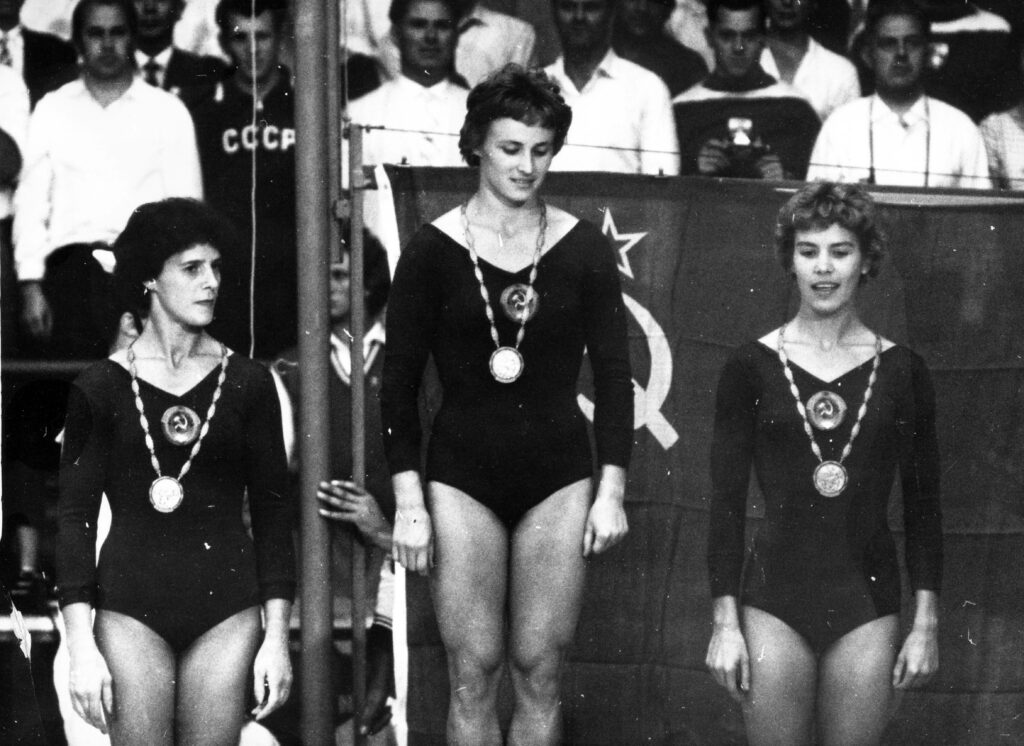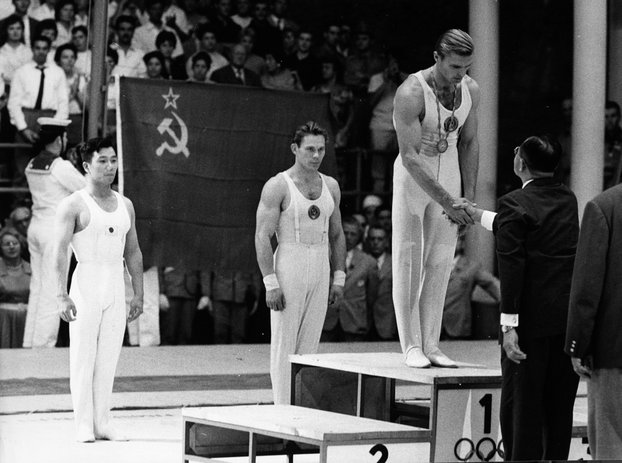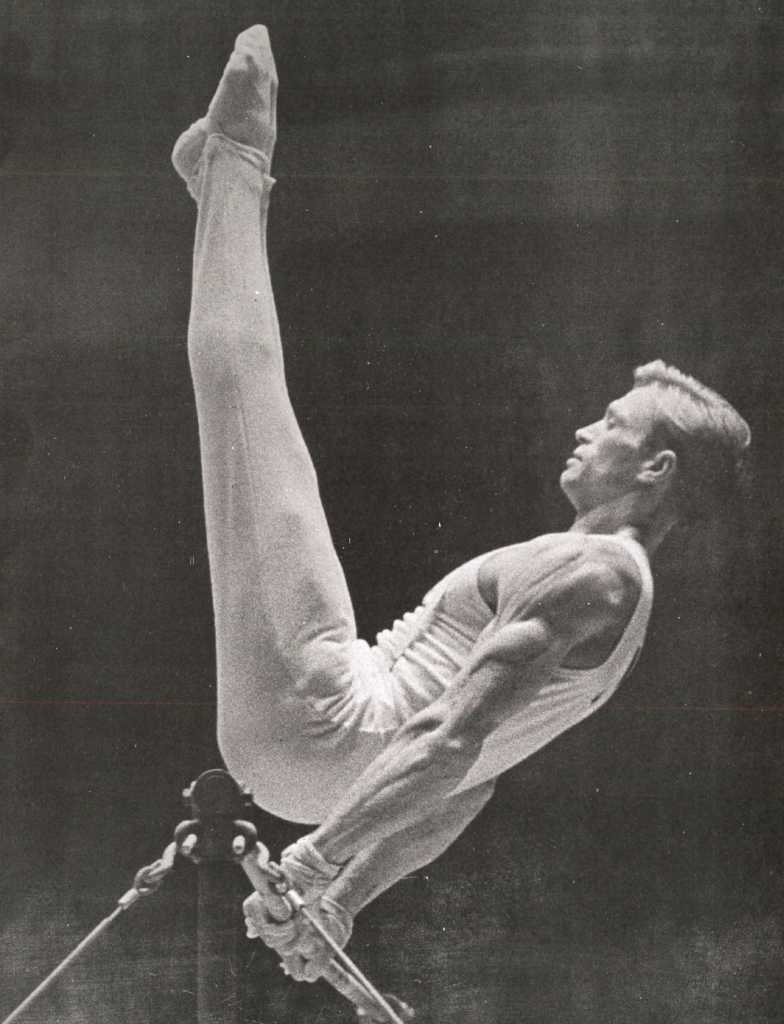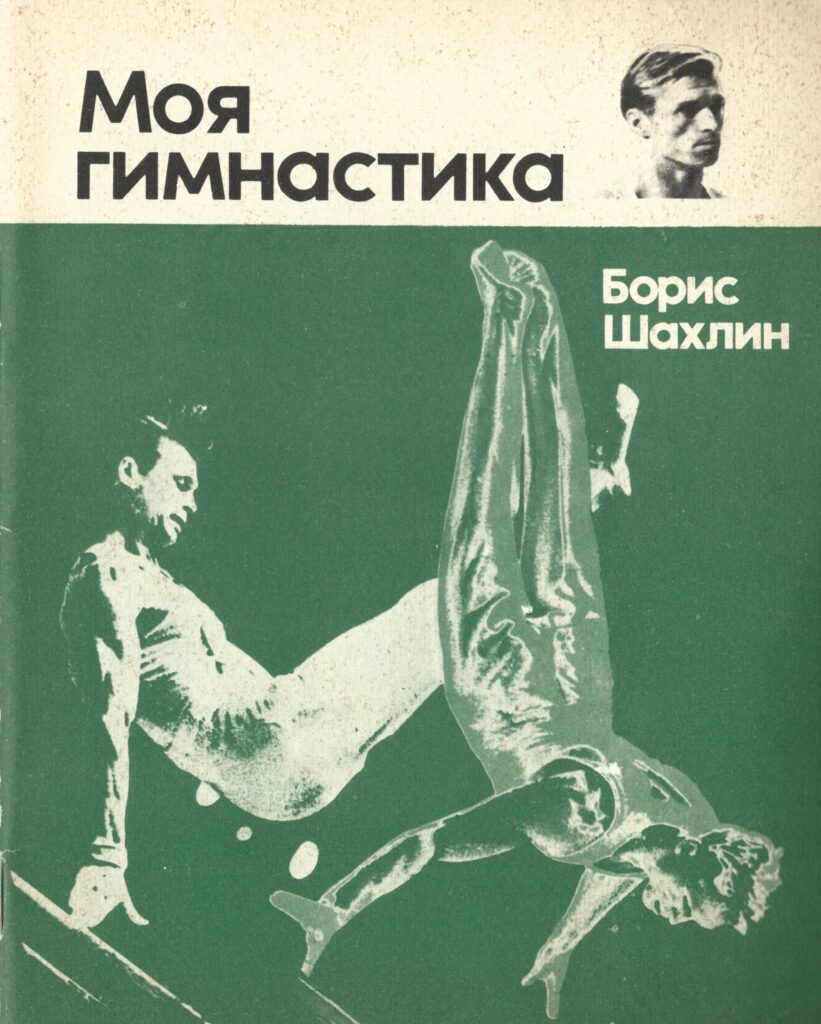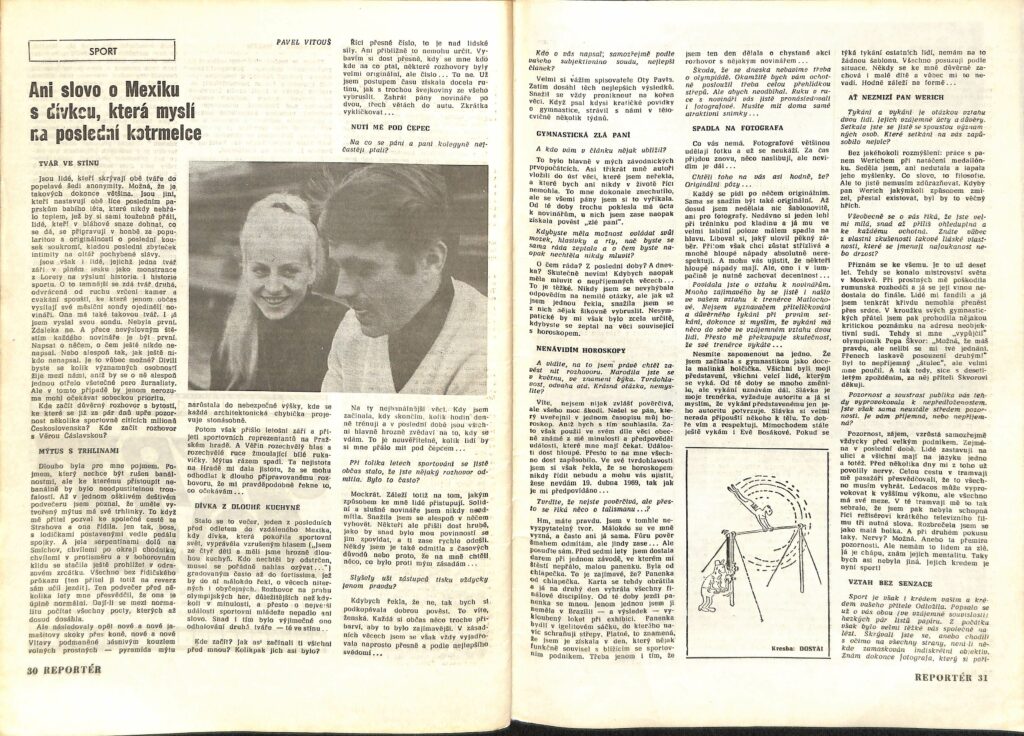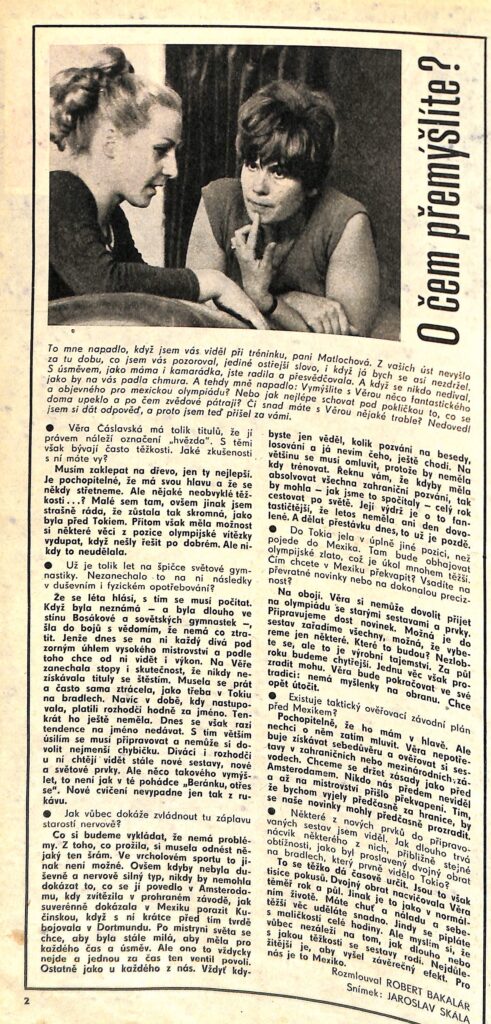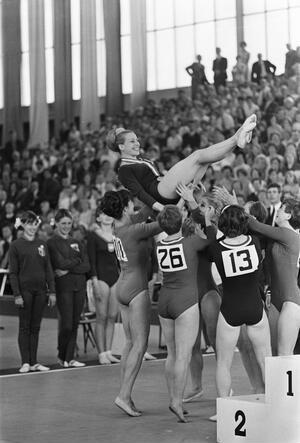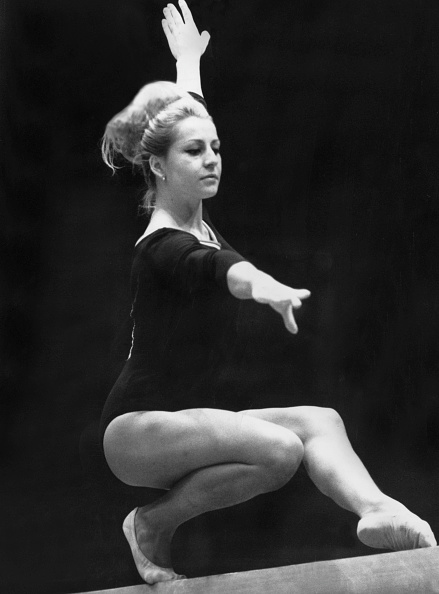In 1961, the Czechoslovak Championships were exciting on the women’s side. Coming into the championships, Věra Čáslavská was the clear favorite. At the Rome Olympics in 1960, she finished eighth in the all-around, the highest finish among the Czechoslovak gymnasts. Then, she tied for third at the 1961 European Championships, finishing behind Larisa Latynina and Polina Astakhova. But, despite her promising international results, Čáslavská had never won a senior national all-around title.
In 1961, it seemed like the title would finally be Čáslavská’s, but she fell off the beam. And Czechoslovak star Eva Bosáková had a major error on bars. Hana Růžičková was able to capitalize on those mistakes and win the Czechoslovak title. (East German gymnast Ute Starke was a foreign guest and technically had the highest all-around title in the competition.)
On the men’s side, the competition was more anti-climactic. Jaroslav Šťastný, the best gymnast on the Czechoslovak team at the 1961 European Championships, took home the title. (Though, Aleksander Rokosa, a Polish guest, technically had the highest all-around total in the competition.)
Here’s a bit more about the competition.

